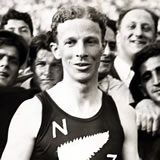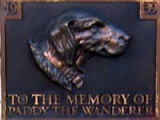
1942 NZ coastwatchers executed by the Japanese
Seventeen New Zealand coastwatchers, together with five civilians, who had been captured in the Gilbert Islands (now Kiribati) in August and September 1942, were beheaded at Betio, Tarawa.
Coastwatchers, service and civilian personnel tasked with keeping a 24-hour watch for enemy ships and aircraft, were a link in the intelligence chain. Under a scheme drawn up by the Royal Navy in 1929, and extensively reorganised just before the Second World War, about 60 stations were established around the New Zealand coast. Others were later added in the Chatham Islands, Pitcairn and Norfolk islands, the Kermadecs and the subantarctic Auckland and Campbell islands.
After the outbreak of war coastwatching was extended into the Pacific. By December 1941 there were 58 stations spread between Western Samoa, Tonga, the Cook Islands, Fiji, the Gilbert and Ellice Islands, the Phoenix Islands, Tokelau and Fanning Island. More were established in 1942 and 1943. A typical station had a radio operator, one or two soldiers, a radio to communicate with headquarters, and a number of lookout posts. Coastwatchers were a mixture of service personnel, civilian government officials (mainly from the Post and Telegraph and Public Works Departments), and local volunteers.
For most coastwatchers the main challenges were isolation and boredom. For those on the ‘front line’ in the Gilbert group, however, the risk of capture by the Japanese was very real. In December 1941 seven New Zealand coastwatchers – three radio operators and four soldiers – were captured on Butaritari in the Gilbert Islands. They were taken to Japan and spent the remainder of the war in prisoner of war (POW) camps. On 26 August 1942 Sergeant Ronald Third, who had volunteered to remain behind after his colleagues were evacuated, was captured on Ocean Island. He died in captivity later that year.
Another 17 coastwatchers – seven radio operators and ten soldiers – were captured elsewhere in the Gilberts in August and September 1942. Together with five civilians (three British, one Australian and one New Zealander), they were brought to Betio, Tarawa, where they spent three days tied to coconut trees in front of the Japanese commandant’s house, before being confined in the native lunatic asylum enclosure. On 15 October 1942 United States forces bombed and shelled Tarawa. One prisoner, believed to be a civilian, apparently escaped to the beach and waved to the American planes. He was hunted down and killed. That afternoon the Japanese beheaded all of the other prisoners, either as a reprisal for the raid or revenge for the escape.
A Tarawa local, Mikaere, later described the events of 15 October:
I heard a lot of noise in the lunatic enclosure. There was a lot of shouting going on. I ran into the house nearest the lunatic enclosure and sat on the floor. This house is about twenty fathoms from the lunatic enclosure. While I was sitting in the house I saw all the Europeans sitting down in line in front of the first house inside the lunatic enclosure. There were a lot of Japanese coolies inside the enclosure. One Japanese stepped forward to the first European and cut his head off. Then I saw a second European have his head cut off and I could not see the third one because I fainted.
The executed coastwatchers, and Sergeant Third from Ocean Island, were posthumously mentioned in despatches ‘For exemplary conduct in coastwatching and communication duties in the Gilbert Islands area in the face of the enemy, despite overwhelming odds and the knowledge that relief or escape was impossible.’ Later, the seven civilian coastwatchers were retrospectively given military rank so that their dependents could claim pensions and other rights.
All other civilian coastwatchers were enrolled in the Army from December 1942, in the hope that this would reinforce their right to treatment as POWs if captured. As the Pacific war moved further north, most of the stations were closed in 1944. The last of the coastwatchers returned to New Zealand two years later.
Image: Monument to New Zealanders killed on Tarawa (National Library)
Internal links
I have been researching this event for the benefit of family members of Ray Ellis, one of the coastwachers killed at Tarawa and would much appreciate it if I could be put in contact with Paul Canham who has posted a message here about material he has available for research. I am happy to have my email address forwarded to him.
I have a lot of original, unpublished material on the New Zealand coastwatchers. This was compiled and held by David Shepherd, who was based at Suva Aeradio (BVO) which was the radio link with the coastwatchers. I will be happy to make it available to any genuine researcher.
The comment that "He was hunted down and shot by armed Korean labourers" cannot be correct as Korean labourers were not landed on the island until December, some months after the atrocity. There is no doubt that the escapee was hunted down and somehow killed, most likely by a staff officer of the Japanese occupying forces.


















Community contributions